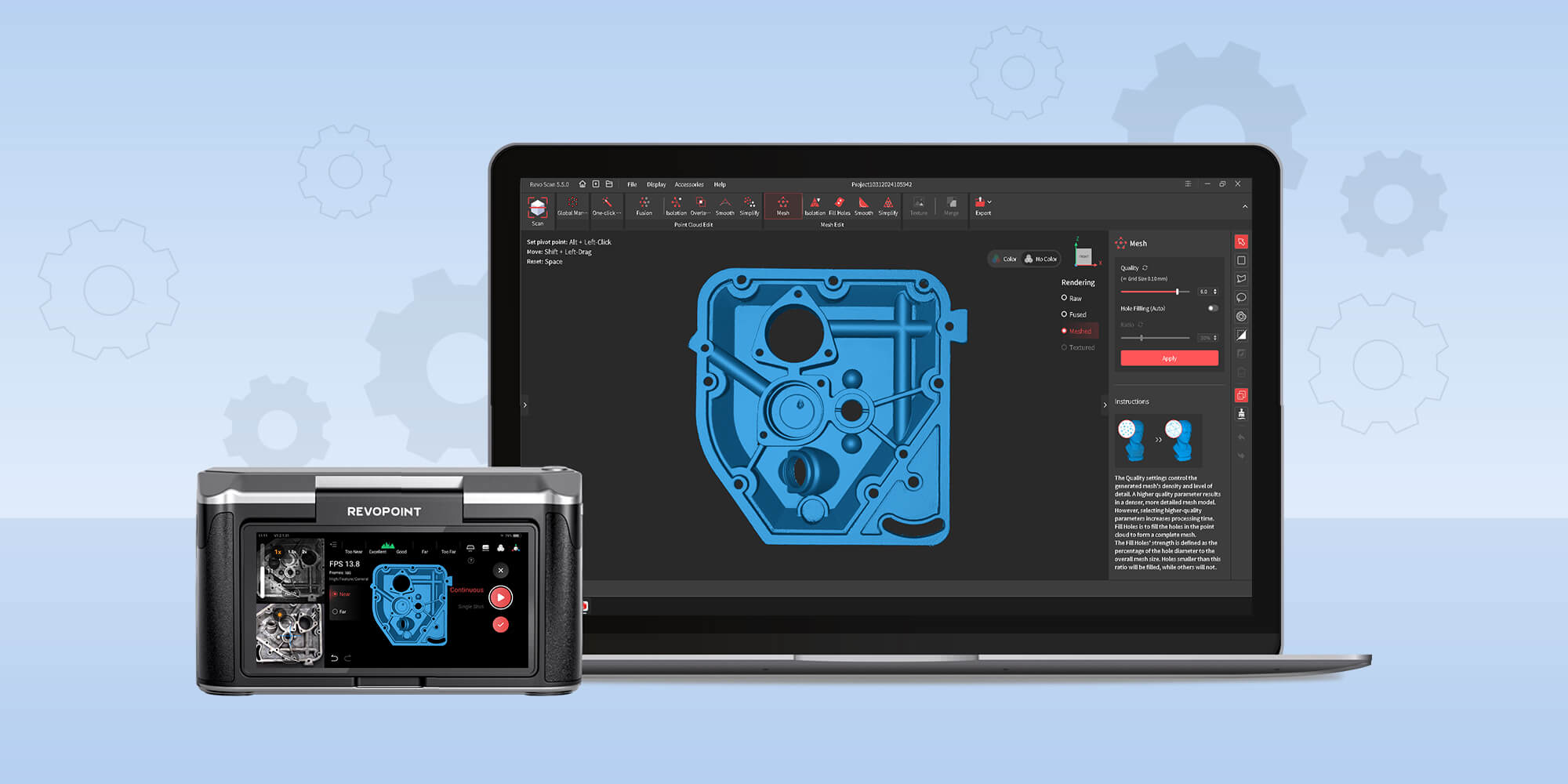Thanks to 3D scanners like the Revopoint MetroX 3D scanner, once horrendously expensive blue laser scanning technology is now, for the first time, affordable to consumers and small businesses. But what exactly is blue laser scanning, and why does it matter? Let’s examine the science behind this technology and its significance.
How Blue Laser Scanning Works
Unsurprisingly, blue laser scanning involves projecting a blue laser beam onto an object’s surface and capturing the reflected light in depth cameras to capture an object’s surface. Here’s a step-by-step breakdown of the process:

1. Laser Projection
The scanner emits either crossed or parallel lines from its blue laser arrays, depending on whether the user wants to capture larger surface areas or scan finer details. Blue light is used because it has a shorter wavelength than red or green lasers, allowing for higher resolution and finer detail capture.
2. Light Reflection
The blue laser lines hit the object’s surface and reflect back to the scanner’s depth cameras. The amount of light reflected depends on the surface's color, material, and reflectivity.
3. Capture
The scanner’s depth cameras capture the reflected laser and measure the line's deformation or displacement to calculate the distances and create a point cloud. This triangulation measurement method is extremely accurate and works well for capturing surfaces.

4. Point Cloud Generation
The collected data points form a “point cloud,” a dense collection of coordinates in a 3D space representing the object’s surface.
5. 3D Model Creation
Advanced algorithms in Revo Scan meshes (converting the points into a continuous surface using triangles) the point cloud data to create a highly accurate and detailed 3D object model. This model can be used for various applications, from quality control to reverse engineering.

Why Blue Laser Scanning Matters
Blue laser scanners, such as the Revopoint MetroX, have several advantages that make them valuable tools for multiple industries.
The first significant advantage is its high repeatability (up to 0.01 mm) and accuracy (up to 0.03 mm), partly due to the shorter wavelength of blue lasers, which offer better resolution and reduced noise for cleaner and more accurate 3D models.
This allows blue laser scanners to capture fine details without issues, which is particularly important in industries like aerospace and automotive, where accuracy is critical for smaller parts.

There’s also an increase in versatility. Unlike structured light scanners, blue laser scanners like MetroX can handle a wide range of materials and surfaces, including shiny and dark objects, without first applying scanning spray.
Applications of Blue Laser Scanning
Blue laser scanning ensures accuracy and repeatability in quality control, helping manufacturers detect defects and maintain high standards. In aerospace and automotive industries, blue laser scanners facilitate the design and inspection of complex components, ensuring they meet safety and performance criteria.
When it comes to reverse engineering, accurate data is essential, whether performing modification or replication. Also, in healthcare, accurate scan data can assist in creating accurate prosthetics and orthotics and planning complex surgeries.
The Revopoint MetroX is available right now on Kickstarter for as little as $669.



Hinterlasse einen Kommentar
Diese Website ist durch hCaptcha geschützt und es gelten die allgemeinen Geschäftsbedingungen und Datenschutzbestimmungen von hCaptcha.